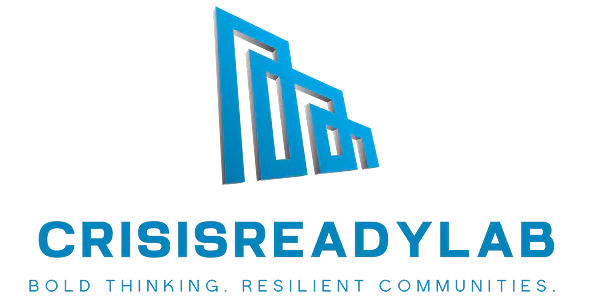Disaster Recovery Is Not a Grant Program
In the weeks after a disaster, it’s common to hear a version of this question in every meeting:
“When is the funding coming?”
It’s not a bad question. It makes sense. Communities are desperate for help. Local leaders are trying to reassure people. And everyone—from city planners to nonprofit leaders to small business owners—knows that rebuilding takes resources.
But here’s the trap: if your recovery strategy is just a list of grants, you don’t have a strategy.
You have a wish list.
And that distinction matters more than most people realize.
The Funding Fallacy: Why So Many Recoveries Stall
There’s a widespread belief—especially among those who haven’t led recovery before—that once you secure the money, the recovery will happen.
But time and again, we’ve seen communities land the grants… and then get stuck. Funding sits unused. Projects stall. Programs get announced with fanfare but never launch. Community members hear about millions in federal aid—but can’t see a single improvement in their neighborhood.
Why does this happen?
Because recovery isn’t a grant program. It’s a system-building process. If you don’t have a system ready to implement the funding, you’ll burn precious time trying to build it after the money lands—and often, by then, it’s too late.
What ‘Grant-Centered’ Recovery Looks Like (and Why It Fails)
When communities treat recovery as a funding chase, a few patterns emerge:
Silos explode. Each department or organization applies for its own funding without coordination. You end up with 17 projects and no plan.
Energy goes into applications—not implementation. Staff spend months chasing competitive grants, only to realize they don’t have anyone lined up to run the program once it’s awarded.
Timelines don’t align. One grant expires in 12 months, another in 36. Some funding can’t be used until a study is done. Some must be spent immediately. Coordinating across these windows becomes its own full-time job.
Big gaps get missed. When you only apply for what’s available—not what’s needed—you end up with strange blind spots. Housing might get funded while mental health support goes ignored. Critical infrastructure may stall because permitting staff are overwhelmed and no one thought to staff up.
The community loses faith. Residents hear about millions flowing in—but still can’t rebuild their homes or return to work. They start to believe recovery is broken. And without trust, it’s nearly impossible to sustain momentum.
What Recovery Actually Is
Recovery is about rebuilding systems—not just infrastructure, but also housing, services, governance, and social support. That means the real work is in designing and managing the engine that can turn money into outcomes.
The money alone doesn’t build the road, rehouse the families, restart the businesses, or train the workforce. People do. Teams do. And they need structure, tools, communication channels, authority, and capacity to succeed.
Let’s be real: FEMA isn’t coming to do that for you. Neither is HUD. Neither is philanthropy.
They’ll fund it. They’ll support it. But implementation lives at the local level.
That means you have to build your own operating system for recovery—and fast.
Start With the System, Then Bring in the Money
Communities that move recovery forward effectively flip the common model on its head.
They start with questions like:
What are the biggest problems we need to solve?
What systems were damaged, broken, or overwhelmed by the disaster?
What people, roles, and capacity do we need to address them?
How can we organize ourselves to manage this work over 3–5 years?
Only then do they start matching those needs to funding sources. That’s when grants become tools—not goals. That’s when funding becomes fuel, not a crutch.
And that’s when you stop wasting time applying for every opportunity and start focusing on the ones that actually help you implement the recovery your community needs.
A Quick Reality Check: What This Looks Like in Practice
Let’s say your housing stock was decimated by wildfire. You’ll need:
A permitting process that doesn’t take six months
A housing navigator team that helps residents sort out insurance, FEMA aid, SBA loans, and more
Staff who can manage CDBG-DR, home repair programs, buyouts, and rebuild incentives
A way to coordinate all of this publicly, clearly, and repeatedly over the next 3 years
All of that needs to be built before—or at the same time—as the funding comes in.
If you wait until the HUD money hits, you’re already behind.
The same is true for infrastructure, economic development, and even nonprofit partnerships. Recovery requires infrastructure behind the scenes before anything shows up on the ground.
What To Do Instead: Build Your Recovery Engine
If you’re in the early stages of recovery—or if you feel stuck in a cycle of planning and grant applications—here’s where to focus:
Stand up a recovery structure. Even a small recovery office or coordination unit makes a huge difference. It needs cross-cutting authority, not just admin support.
Map your recovery systems. What broke? What’s needed to rebuild or replace it? Who’s involved?
Identify your biggest capacity gaps. Hiring one operations coordinator can move more recovery than ten planning consultants.
Start small, scale fast. Launch pilot programs, test workflows, iterate on messaging. Build your system in real time.
Use funding to accelerate your system—not define it. Grants should slot into a larger strategy, not dictate it.
Final Thought: Recovery Is a Human System, Not a Paper One
Communities don’t recover because of a well-written grant narrative.
They recover because people build systems, make hard decisions, coordinate under pressure, and turn dollars into progress that residents can see and feel.
Funding matters. But if your plan ends with “get the grant,” you don’t have a plan—you have paperwork.
Want to go deeper?
Explore our full training catalog for practical tools and lessons that help you turn funding into visible, coordinated recovery outcomes.


